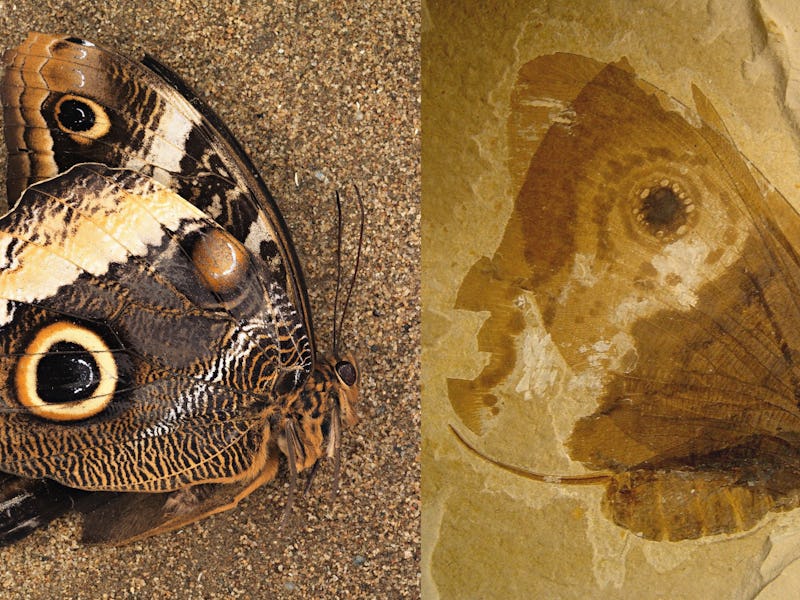"Jurassic Butterfly:" Ancient Insect Shows Modern Qualities
It predated butterflies by 50 million years, yet developed similar attributes.

Large extinct insects that once lived throughout Jurassic forests were very similar to modern butterflies, despite the fact that today’s fluttering insects didn’t come into existence until 50 million years following, scientists at the Smithsonian’s National Museum of Natural History in Washington, D.C. reported Wednesday.
The creatures, Kalligrammatid lacewings, were already well-known by the scientific and paleontological communities, but only recently have fossils (recovered in China) been found that offer extremely well-preserved examples. According to the Smithsonian’s study team, the creatures appear to have served as pollinators, utilizing tubular mouthparts that are comparable to the organs butterflies use to partake of fluids found in flowering flora — in fact, one fossilized specimen demonstrated carbon material within its feeding tube — but not matter taken from a flower, as there weren’t any nectar-producing flowers existing in the Kalligrammatid’s environs. Smithsonian Curator of Paleoentomology Conrad Labandeira reported in an article posted Wednesday to Proceedings of the Royal Society that “Various features of the mouthparts all indicate that these things were sucking fluids from the reproductive structures of gymnosperm plants.”
What’s more, the lacewings bore colorful eyespot patterns that closely resemble those found on some butterflies today, which may have helped to distract or deter potential Jurassic predators. Chemical analysis of the fossilized lacewings revealed the pigment melanin existed within the eyespot marks — just as modern butterflies construct their faux ocular wing markings. Said Labandeira to Phys.Org Wednesday, “That, in turn, suggests that the two groups of insects share a genetic program for eyespot production…The last common ancestor of these insects lived about 320 million years ago, deep in the Paleozoic. So we think this must be a developmental mechanism that goes all the way back to the origins of winged insects.”
The findings by the researchers have led to an opinion that this is an example of convergent evolution — a circumstance where two unrelated organisms evolve analogous traits in response to similar environmental contingencies.